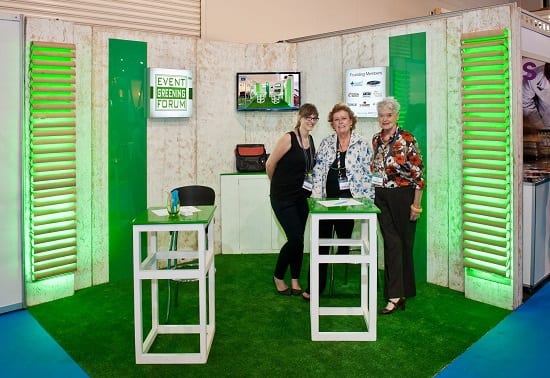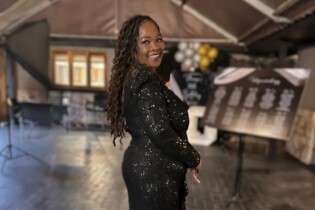The Event Greening Forum (EGF) is in the process of contracting an independent researcher to investigate the life cycle of wood in the South African exhibition industry. Greg McManus, the EGF Chairperson, says, “Wood and wood products remain a staple material in the event and exhibition industry. It is used for everything from displays and exhibition stands, to floors, platforms and staging. Yet, it also represents a large component of event waste streams and even unnecessary cost to clients. We need as an industry to look at ways in which this often unsustainable resource is used more responsibly. By reducing wood-to-waste, the industry will be contributing to greater responsible use of wood for the better of our communities and the planet itself.”
The exhibition industry is resource-intense as it requires large-scale builds of temporary displays. Many of these structures are single use and abruptly become waste. Custom stands are possibly the biggest culprit of this. These unique designer stands are largely constructed out of wood products, such as Medium Density Fibreboard (MDF) made from recycled wood fibres and resin. After a show has ended, these stands are typically dismantled and tossed into a skip to go to landfill. ‘Build and burn’ is the term used for this global practice. Only a few elements, such as AV and lighting, tend to be salvaged.
It is believed that some MDF and wood waste is diverted to low-income areas where it is used as building materials or furniture or, more worryingly, as firewood. While re-use like this fits the greening ethos of minimising waste, there are other factors to take into account to make sure it is done responsibly. MDF often contains formaldehyde and is painted. Burning it is likely to have negative health effects which we need to avoid.

Fortunately, not all custom stands are thrown out as some exhibitors re-use their stands. Gill Gibbs is CEO of ConCept G Exhibition & Event (Pty) Ltd, a specialist exhibition and event stand contractor that does not believe in discarding their custom stands. They strive to recycle and re-purpose them with as little waste as possible. Gill says they often conceptualise, design, manufacture and plan stands with a strategy in mind of how they can re-purpose and re-use it.
Gill says, “We strategise with longevity first and foremost on the agenda. For most of our clients, it is somewhat about preservation and consciousness and then also about saving on the bottom line.”
She continues, “The challenge comes in with ensuring that the materials are not damaged when dismantling the stand to re-use at another exhibition. We prepare and educate our clients who require a rebuild scenario that the stands are stored and refurbished when required.”
Justin Hawes is the MD of exhibition and event specialist Scan Display and the Chairperson of the EGF’s Marketing committee. He adds, “A stand which is made specifically to be re-used usually averages 5 to 10 re-builds, depending on the materials being used. With careful planning this can be extended. The EGF’s stand was first built in 2011 for the Climate Change Response Expo at COP17 in Durban. It is made of Oriented Strand Board (OSB) which is very strong, and has a robust modular design. It has now been used over 12 times, and we are still using it today.”
It is believed that re-use of stands is uncommon in the industry. However the EGF recognises that not enough verifiable data is available on this topic, and much of the current understanding is based on narrow observations and assumptions. The EGF’s research will therefore objectively uncover the cradle-to-grave journey of the manufacture of wood products to stand production and disposal, and its environmental and social implications. It will also identify best practice recommendations as an alternative to the problem areas.
If you would like to get involved with this research, either through funding or participation, please contact Lynn McLeod at lynn@eventgreening.co.za.






